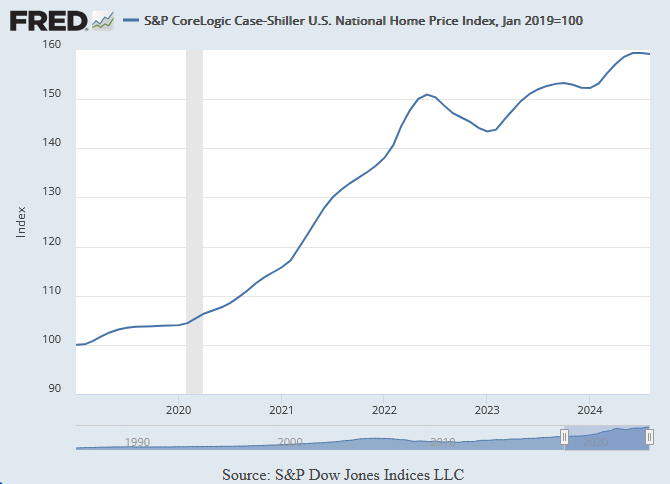
One of Donald Trump’s big campaign promises when he won both in 2016 and this year was to reduce the size of the Federal government and radically reduce government spending.
 Bullion.Directory precious metals analysis 22 November, 2024
Bullion.Directory precious metals analysis 22 November, 2024
By Peter Reagan
Financial Market Strategist at Birch Gold Group
Why?
Because it could allow the Federal government to actually stop borrowing money to pay for everything which means that there could, potentially, be much less inflation. And everyone wants that, right?
Some people, though, are scared that Trump could include Social Security cuts in his efforts to reduce the size of the government and Federal budget. After all, it’s the single biggest expense the Federal government has.
What is the real situation? To start, let’s look at…
How do they plan to make these cuts in government spending?
Some believe that the basic idea that Trump is going with to reduce government waste is to go with the “wrecking ball theory.”
While it sounds like a crazy name, it is a good metaphor for what Trump could do to the Federal government and the Federal bureaucracy in particular.
Or, at least, some Trump opponents see it that way. They think that he’ll wreck the government which they see as the backbone of our country (why the government isn’t the backbone of the country is a discussion for a different time).
To explain what they mean by the wrecking ball theory, Jim VandeHei and Mike Allen at Axios write:
Elon Musk has persuaded President-elect Trump that government has grown so big, bloated, slow and sclerotic [that] only a wrecking ball can fix it.
There’s a logic to that thinking.
Like the Gordian Knot, Sometimes, a thing is such a mess and would be such a headache to slowly fix that the best thing is to simply wreck it and smash it to pieces.
To be clear, neither Trump nor Elon Musk or Vivek Ramaswamy (that I’m aware of) have suggested completely destroying the Federal government.
But we can probably all agree that some of it needs to go. We just might disagree on which parts those are.
VandeHei and Allen continue:
The wrecking-ball theory holds that only a massive shock to the system will break a lifetime of build-up.
Musk wants to be Trump’s wrecking ball. Musk has vowed to cut $2 trillion from the federal budget — about 30% of annual government spending.
$2 trillion is a lot of money. 30% of government spending is a massive amount.
To give perspective, what could you do if you suddenly weren’t borrowing ⅓ of all that you spend? Think that you could begin to get your budget back on track and pay down some debts? Maybe invest more for your future?
This line of thinking seems to be what Trump and company plan on doing here.
But is Social Security at risk?
For those who haven’t done enough retirement planning, yet, and expect to depend on Social Security to make it through retirement, there is good news there. Again from VandeHei and Allen:
Mandatory spending programs – Social Security Medicare, Medicaid, the Supplemental Nutrition Assistance Program (SNAP) – are governed by laws laying out formulas for how benefits are paid, Axios chief economic correspondent Neil Irwin pointed out to us.
In other words, the Trump administration can’t unilaterally decide to just cut Social Security benefits or other similar programs
Legally, Elon can’t just stop cutting checks. Trump would have to get changes through Congress in which he is going to have only a modest majority in the Senate and a minuscule majority in the House.
And let’s be frank here: most baby boomers and many Gen Xers getting close to retirement age aren’t likely to be friendly to the idea of cutting Social Security payouts, so getting something like that passed through Congress is almost certainly not going to happen.
Plus Trump, attentive to his huge base of older voters, opposes entitlement reform.
Look: I personally find it insulting to refer to Social Security as “entitlement.”
It’s our money, we paid it into the fund! Regardless, Social Security isn’t going anywhere. Meanwhile the Federal government has to figure out how to keep paying out for the program before 2035. That’s when the cash runs out.
Good news, right?
That doesn’t mean everything is rainbows and unicorns…
Keep in mind, though, that we still have to deal with the fallout from nearly four years of Bidenomics.
That means that Trump will have to work hard to get the economy turned around, and as I’ve talked about before, there will be struggles getting this ship going in the right direction.
One of those challenges will be the inflation that we’re still dealing with and that we’ll continue to deal with.
Then, there are the higher costs for… well… everything thanks to Bidenomics’s failed policies that getting rid of inflation won’t bring back down.
(Remember, inflation is the rate of price increase, so, stopping inflation means that the price would stop going up. It doesn’t mean that the price would actually go down.)
And in case you have any doubt about how much the cost of things has changed over the last few years, CBS News has that data in abundance.
For example, since 2019 (so, just the last five years), the average price of coffee (which is a major commodity expenditure in my house) went from $4.17 to $6.64, an increase of over 59%.
And that’s not a price change that can be attributed to Starbucks prices! That was brewing at home five years ago and still brewing my coffee at home (though, I am using my own grinder now – and yes, I’m a coffee snob).
For another example, eggs increased from $1.28 per dozen to $3.37 per dozen, an increase of 163%!
There’s something to make anyone upset looking at that chart. They’re little things, though – it’s hard for me to get too worked up over the 109% rise in sweet potato prices.
But there’s one thing, America’s biggest asset class, that’s even more worrisome…
The most splendid housing bubble in America
Another ugly example of Bidenomics has to do with the cost for housing, both for rent and home prices. Official CPI numbers don’t accurately reflect the cost of homeownership, so we’ll look beyond headline inflation reports.
On average, the price of a home in the U.S. has risen 59% since 2019:

Nationwide averages don’t quite tell the full story – scroll down here to see a city-by-city breakdown of home prices. Or check out Wolf Richter’s coverage of “Housing Bubble 2” for a more granular discussion.
If you’re fortunate enough to already own a home, congratulations! Hope you locked in a 3% mortgage during the pandemic panic…
If you don’t already own a home – or you’re looking to sell your home for any reason? This isn’t good news. The combination of 60% price increases and 7%+ mortgage rates (and, of course, a significantly higher cost of living) has put the housing market in a deep freeze.
“Deep freeze” is not an exaggeration. Wolf Richter sums it up:
…whole-year sales in 2024 comes in at 4.02 million sales, the lowest since 1995, below the worst year of the Housing Bust, 2008, with 4.11 million sales.
The cost of owning a home (maintenance, repairs and insurance) rose 36% since 2019. For all these reasons, as I reported earlier this year, the average American family can no longer afford the average home.
These price increases will not go away without a major correction in the real estate market. Imagine property values declining 60% over the next five years. That’s what it would take to correct the situation! For context, peak to trough, the early 2000s housing bubble saw prices ball just 34% before stabilizing – and that event wiped out $7.5 trillion in home equity nationwide.
So we’re stuck between a rock and a hard place – permanently unaffordable prices, or an apocalyptic collapse in home prices significantly worse than the one that touched off the Great Financial Crisis.
Yes, the economy’s on shaky ground – but you don’t have to be…
Putting your retirement savings on a firm foundation
In some ways, building your retirement plan is like building your dream home. The first step is to envision what it should look like.
Next, you survey the land to make sure it doesn’t hold any unpleasant surprises. You want to avoid sinkholes, floodplains and fault lines. (Articles like this one seek to educate you on the current state of the economy – they’re part of the “survey the land” step.)
Then, you lay the foundation. Your foundation should be stable, and it should be able to endure everything that might happen in the future. You can avoid building on a floodplain, but you still never know when a tornado could sweep down on you…
I believe that diversifying your retirement savings with physical precious metals offers time-tested stability, resistance to inflation and lower volatility that make an ideal foundation for your retirement.
By establishing a precious metals IRA, you’re laying a strong, stable and reliable foundation for your financial future.
Diversifying with physical gold and silver can help reduce volatility and provide a smoother journey despite economic ups and downs.
Best of all, just about everyone can benefit from saving for the long term with a precious metals IRA. You might not be able to afford breaking ground on your dream home (yet!) but you can still enjoy the benefits of diversifying your savings – and start building the foundation of the retirement you deserve – today.
Peter Reagan

Peter Reagan is a financial market strategist at Birch Gold Group, one of America’s leading precious metals dealers, specializing in providing gold IRAs and retirement-focused precious metals portfolios.
Peter’s in-depth analysis and commentary is published across major investment portals, news channels, popular US conservative websites and most frequently on Birch Gold Group’s own website.
This article was originally published here












 Material provided on the Bullion.Directory website is strictly for informational purposes only. The content is developed from sources believed to be providing accurate information. No information on this website is intended as investment, tax or legal advice and must not be relied upon as such. Please consult legal or tax professionals for specific information regarding your individual situation. Precious metals carry risk and investors requiring advice should always consult a properly qualified advisor. Bullion.Directory, it's staff or affiliates do not accept any liability for loss, damages, or loss of profit resulting from readers investment decisions.
Material provided on the Bullion.Directory website is strictly for informational purposes only. The content is developed from sources believed to be providing accurate information. No information on this website is intended as investment, tax or legal advice and must not be relied upon as such. Please consult legal or tax professionals for specific information regarding your individual situation. Precious metals carry risk and investors requiring advice should always consult a properly qualified advisor. Bullion.Directory, it's staff or affiliates do not accept any liability for loss, damages, or loss of profit resulting from readers investment decisions.

Leave a Reply